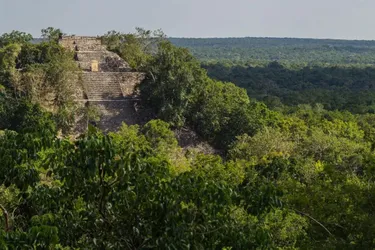Lost Mayan city the size of Edinburgh found in Mexico

Archaeologists have made a remarkable discovery in the Mexican state of Campeche, discovering a large-scale ancient complex of the Mayan civilization called Valerian. The discovery was made through the accidental discovery of lidar data on the Internet by Tulane University graduate student Luke Old-Thomas.
The city, which flourished between 750 and 850 AD, could have housed 30,000 to 50,000 inhabitants - more than the population of the region today. In terms of building density, Valerian is second only to Calakmul, the largest Mayan settlement in Latin America, located about 100 kilometers away. This was reported by the BBC.
Archaeologists have discovered on the territory of 16.6 square kilometers:
- Two large centers connected by residential buildings and bridges
- Temple pyramids and squares for religious ceremonies
- Sports grounds for the ancient game of ball
- A system of reservoirs
- A total of 6764 buildings for various purposes
Professor Marcello Canuto, co-author of the study, emphasizes that this discovery refutes Western ideas about the tropics as a place of "the death of civilizations". Professor Elizabeth Graham of University College London adds that the discovery confirms the existence of a developed Mayan urban culture.
Although the exact causes of the city's decline remain unknown, researchers suggest that climate change could have been a key factor.
As a reminder, archaeologists have found a square dating back to the Ancient Roman era in Spain.
If you want to get the latest news about the war and events in Ukraine, subscribe to our Telegram channel!
